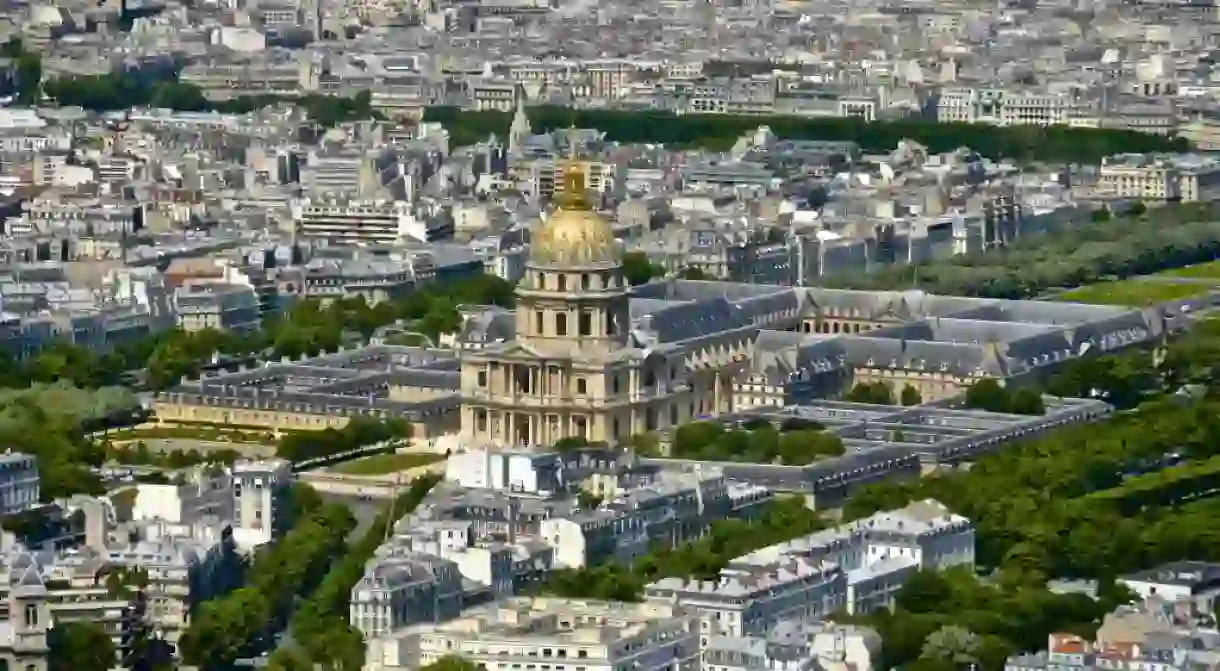The Oldest & Most Beautiful Buildings in Paris

Known for its fashion, food and culture, Paris remains a fascinating capital to explore, in one of the most visited countries in the world. The city never fails to enthral and its offerings can be overwhelming, but let us guide you through nine of the oldest buildings worth visiting.
Notre Dame de Paris
Construction on this beautiful Gothic cathedral started in 1163 and took over 100 years to complete; in a collaborative process where the Catholic Church and the entire population of Paris participated—with money, work craft or knowledge. Maurice de Sully was the Bishop of Paris in 1160 and he is central to the origin of the Notre Dame. He wanted to honor Mary, hence the name Notre Dame de Paris, which translates as Our Lady of Paris.

La Sainte-Chapelle
It is not known when construction began on this beautiful church, however historians believe it was completed in 1248. The edifice is separated into two floors; downstairs, where the chapel stands, and upstairs, where the royal relics are kept.
Two fires, one flood and a revolution have contributed to its history. During the latter, the church’s external decorations were destroyed, along with anything inside that represented affluence and royalty. Today, this monument is famous for its outstanding stained glass.

La Sorbonne
Founded by Robert de Sorbon in 1257, La Sorbonne is one of the oldest and most esteemed universities in Europe. When it first opened, the university was exclusively dedicated to theology; in the medieval era, schools were dedicated solely to monks, scribes and other people associated with the Catholic Church. You’ll find it in the Latin Quarter of the 5th arrondissement, sometimes also called the student district.

N°51 rue de Montmorency
Built in 1407, this is the oldest house in Paris, but it hasn’t always had the same address—the street’s current name comes from the influential Montmorency family, and came about in 1768. They were a historically significant family: Anne Montmorency was a well known soldier, Duke Francois de Montmorency was locked away for a year in the fortress of La Bastille after being accused of political corruption, and Henry de Montmorency lost his life on the guillotine.
During the French Revolution, the street lost its name, but thanks to Napoleon it was restored in 1806. Today, this road is famous mainly for the house, which has been turned into a restaurant. However, it is still possible to see some inscriptions on the walls referencing its original function—to welcome poor workers.

La Conciergerie
Located on the western portion of Île de la Cité, an island in the River Seine, this wonderfully imposing gothic behemoth was built in the 14th century. It was initially meant to be part of the royal palace, but was turned into a prison during the revolution. La Conciergerie housed the Revolutionary Tribunal, as well as convicts headed for the guillotine.
According to some records, over two thousand prisoners were sent to their deaths from this prison, including some famous personalities—Marie Antoinette, Robespierre (the Tribunal’s first head) and Napoleon III were imprisoned here before being beheaded.

Palais du Luxembourg
Commissioned by Marie de Médicis, construction on the palace began in 1615 and finished 16 years later, in 1631. The tally of residents is as impressive as you’d expect; first Marie de Médicis herself, until her son Louis XIII forced her out, then Gaston d’Orléans with his wife and daughters. The Sun King, Louis XIV, was also a former resident.
The palace has been repurposed a few times since then—during the French Revolution, it was a prison and in 1799 it was converted to house the Senate, which it still does today.

N°3 rue Volta
Until the late 1970s, this house was considered to be the oldest in Paris. It was assumed to have been built in the 14th century, until archaeologists discovered ancient documents dating it to 1644. It is now accepted to be a replica of a medieval design, constructed for a rich member of the bourgeoisie. Nevertheless, it is still an important historic building and is warmly admired by the French.
The building was saved in 1914 when the war started and today, it houses a Chinese restaurant at street level, with residential flats above it.

Les Invalides
Now a war museum, Les Invalides—also known as L’hopital des Invalides—is divided into three major parts: the hospital, the church and the dome. As the name suggests, this monument was built as a hospital for wounded soldiers, by Louis XIV. The church and dome were considered a ‘hotel’ for recuperating servicemen who wished to live a peaceful life. It opened in 1675 and provided care and shelter to 4,000 wounded residents over the course of that first century.

Arc de Triomphe
L’Arc de Triomphe is one of the most popular monuments in Paris after the Eiffel Tower. It was commissioned by Napoleon, and built between 1806 and 1836, however due to political changes, the original plans were continually modified.
The impressive end result represents power and unification, and strives to honor those who fought for France, especially during the Napoleonic wars, hence the name “The Arch of Triumph.” The inside and top of the arch are engraved with the names of generals and soldiers who fought for Bonaparte.
This patriotic function isn’t limited to the 19th century, and underneath the vault of the arch is the “Tomb of the Unknown Soldier,” containing the remains of an unidentified soldier who fought during World War I.














